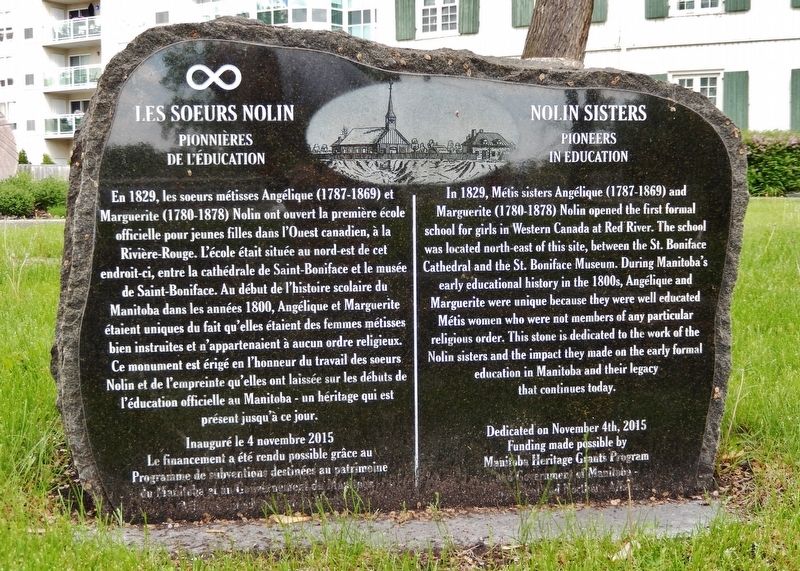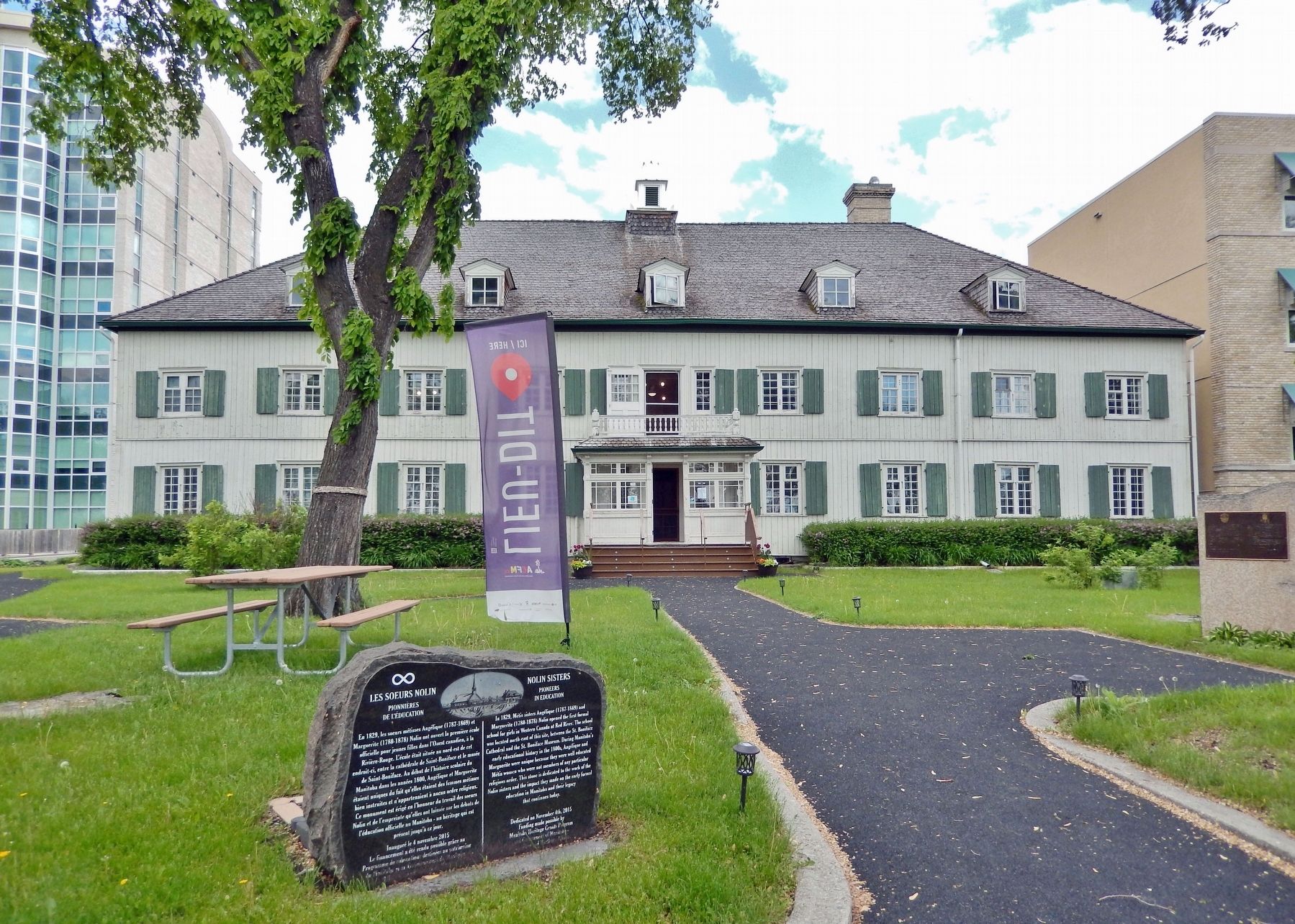Central St. Boniface in Winnipeg, Manitoba — Canada’s Prairie Region (North America)
Les Soeurs Nolin / Nolin Sisters
Pionniers de l'éducation / Pioneers in Education
Erected 2015 by Programme de subventions destinées au patrimoine manitobain / Manitoba Heritage Grants Program.
Topics. This historical marker is listed in these topic lists: Education • Native Americans • Settlements & Settlers • Women. A significant historical year for this entry is 1829.
Location. 49° 53.268′ N, 97° 7.412′ W. Marker is in Winnipeg, Manitoba. It is in Central St. Boniface. Marker can be reached from Tache Avenue just north of Rue Despins, on the right when traveling north. Marker is located on the Saint-Boniface Museum / Grey Nuns' Convent National Historic Site grounds. Touch for map. Marker is at or near this postal address: 494 Tache Avenue, Winnipeg MB R2H 2B2, Canada. Touch for directions.
Other nearby markers. At least 8 other markers are within walking distance of this marker. Le Couvent des Soeurs Grises / Grey Nuns' Convent (a few steps from this marker); Sister Marguerite d’Youville / Sœur Marguerite d’Youville (a few steps from this marker); The Five Saint Boniface Cathedrals (about 120 meters away, measured in a direct line); Jean Baptiste La Vérendrye and Jean-Pierre Aulneau
(about 180 meters away); Chief One Arrow (about 180 meters away); The Creation of Manitoba (approx. 0.4 kilometers away); Forks of the Red and Assiniboine (approx. 0.4 kilometers away); Pierre Gaultier de Varennes et de La Vérendrye (approx. 0.4 kilometers away). Touch for a list and map of all markers in Winnipeg.
Also see . . .
1. Angélique Nolin and Marguerite Nolin: Earliest female Métis educators in a formal school setting.
Angélique Nolin, with the help of her older sister, Marguerite Nolin, ran one of the first formal schools in the Red River settlement. The school was created under the direction of Bishop Provencher in January of 1829. Angélique Nolin’s school provided education to First Nations and Métis girls of French, Cree, Ojibwa and Scottish backgrounds that lived near the Red River settlement. This was the first established school for girls.(Submitted on April 1, 2023, by Cosmos Mariner of Cape Canaveral, Florida.)
2. Manitoba Metis Communities.
Baie St. Paul was a French-Metis parish of the Red River Settlement located west of Fort Garry on the Assiniboine River. Father Belcourt opened a school and engaged Miss Angélique Nolin and her sister Marguerite as teachers. In 1834 they began teaching at Baie St. Paul (St. Eustache). Bishop Provencher assigned the sisters to assist Father Belcourt in learning the Native languages to communicate with the Indians. Angélique and Marguerite were fluent in French, English, Ojibwa and Cree. Both sisters worked for the next decade with Father Belcourt.(Submitted on April 1, 2023, by Cosmos Mariner of Cape Canaveral, Florida.)
3. Red River Settlement.
The Red River Settlement refers to permanently and semi-permanently inhabited areas along the Red and Assiniboine Rivers. The Parishes of St. Boniface, St. James, St. Charles surrounded the Forks of the Red and Assiniboine Rivers where Upper Fort Garry was located. While Indigenous people had used the area around the Forks for millennia, the founding of the Red River Settlement dates to 1811.(Submitted on April 1, 2023, by Cosmos Mariner of Cape Canaveral, Florida.)
Credits. This page was last revised on April 1, 2023. It was originally submitted on March 28, 2023, by Cosmos Mariner of Cape Canaveral, Florida. This page has been viewed 91 times since then and 18 times this year. Photos: 1, 2. submitted on April 1, 2023, by Cosmos Mariner of Cape Canaveral, Florida.

